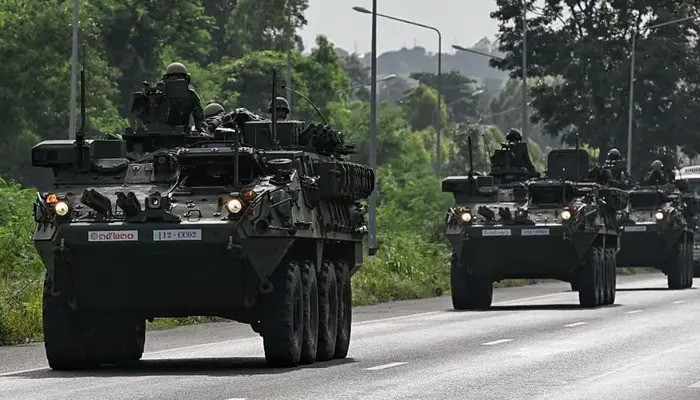As deadly Thailand-Cambodia clashes continue to escalate, Cambodia has urgently called for an “immediate” ceasefire. The ongoing border violence, now in its third day, has killed over 30 people and displaced nearly 200,000. Both nations accuse each other of firing the first shots in the worst flare-up of hostilities in over a decade.
Calls for Truce Amid Rising Death Toll
Cambodia’s ambassador to the United Nations, Chhea Keo, said Phnom Penh seeks an unconditional ceasefire and wants to resolve the conflict through peaceful dialogue. However, Thailand responded with skepticism. Foreign Minister Maris Sangiampongsa stated that Cambodia must demonstrate “genuine sincerity” for meaningful talks to take place.
So far, Thailand has confirmed 19 deaths—13 civilians and six soldiers—while Cambodia has reported 13 fatalities, including eight civilians. The human cost is rapidly mounting on both sides of the border.
Thousands Flee the Conflict
The violence has triggered mass evacuations. Thai officials say nearly 140,000 people have been moved from conflict zones, primarily in Surin, Ubon Ratchathani, and Srisaket provinces. These regions are close to the Cambodian border and are now under martial law.
In Cambodia, over 35,000 residents have also fled their homes, according to the defense ministry. Many are now living in temporary shelters or seeking refuge in safer parts of the country.
New Battlefronts Emerge
On Saturday, Thailand’s military claimed that Cambodian forces opened a new front near the southern coastal region. The Thai navy responded and reportedly pushed the attackers back. Fighting has now spread to 12 locations along the border, with both sides using heavy weapons.
Thai acting Prime Minister Phumtham Wechayachai warned the conflict is teetering on the edge of full-scale war. He confirmed that artillery and rockets have been deployed, escalating the intensity of the clashes.
Read: South Korea Sets Sights on Building Lunar Base by 2045
Accusations and Counterclaims
Thailand accuses Cambodia of launching attacks on civilian areas. In response, Thai authorities evacuated all villages within the potential range of Cambodian rocket fire. On the other hand, Cambodia alleges that Thailand has used banned cluster munitions—an accusation Thailand has not yet addressed. Cluster munitions are widely condemned due to their indiscriminate harm to civilians.
Each side blames the other for igniting the latest conflict. Thailand claims the fighting began when Cambodian drones conducted surveillance operations near Thai military posts. Cambodia counters that Thai troops violated a prior agreement by advancing on a disputed Khmer-Hindu temple near the border.
Historical Dispute Fuels Tensions
The current hostilities stem from long-standing territorial disputes rooted in colonial-era boundary demarcations. The tension goes back more than a century, when French authorities drew borders that have since remained contentious.
Border clashes between the two countries are not new. Sporadic violence over the years has killed both soldiers and civilians, but the current escalation marks the most serious deterioration in bilateral relations since the early 2010s. Tensions worsened in May after a Cambodian soldier was killed in a clash, setting the stage for the current crisis.
Diplomatic Efforts and Regional Response
Despite the rising violence, Thailand has rejected international mediation. Foreign Minister Maris told Reuters that there is “no need” for third-party involvement. This comes even as world leaders, including Malaysian Prime Minister Anwar Ibrahim, have offered to mediate under the banner of the Association of Southeast Asian Nations (ASEAN).
The United States has also issued a statement calling for an “immediate cessation of hostilities, protection of civilians, and a peaceful resolution.” The global community is increasingly concerned that the conflict could destabilize the broader Southeast Asian region.
As artillery fire continues and civilians flee, both sides face growing pressure to step back from the brink. Whether diplomacy can succeed where past attempts have failed remains uncertain—but time is running out.
Follow us on Instagram, YouTube, Facebook,, X and TikTok for latest updates
